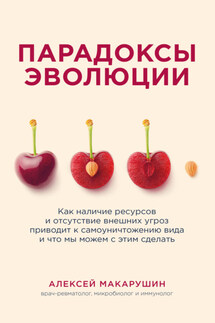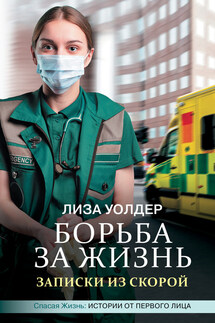Парадоксы эволюции. Как наличие ресурсов и отсутствие внешних угроз приводит к самоуничтожению вида и что мы можем с этим сделать - страница 47
В итоге оказывается, что физическая нагрузка в качестве горметического стресса, действуя на весь организм в самом широком смысле, то есть включающем его микробиом, запускает процесс благотворной адаптации также всего организма в самом широком смысле, что может как кратно увеличивать, так и нивелировать эффективность нагрузки. Это простое рассуждение приводит к необходимости постараться рассмотреть вопросы энергии и движения, в том числе движения эволюции, в контексте постоянного тесного взаимодействия взаимозависимых геномов.
Библиографический список
1. Селье Г. (1982). Стресс без дистресса. – М: Прогресс.
2. ФГБУН «ФИЦ Питания, биотехнологии и безопасности пищи» (2020). Оценка влияния регулярного употребления воды с высоким содержанием бикарбоната натрия на анаэробную производительность. Отчет о научно-исследовательской работе.
3. Александер Д., Райхлен Д. (2020). Зачем мозгу физические упражнения? ВМН, № 3, с. 5–11.
4. Понцер Г. (2017). Парадокс физической активности. ВМН, № 4, с. 27–33.
5. Понцер Г. (2019). Эволюция и тренировки. ВМН, № 3, с. 5–13.
6. Шубин Н. (2008). Внутренняя рыба. История человеческого тела с древнейших времен до наших дней. – М.: Династия.
7. Radak Z., Chung H. Y., Koltai E., Taylo, A. W., Goto S. (2007). Exercise, oxidative stress and hormesis, Ageing Res. Rev. 170.
8. Malm C., Sjodin T. L., Sjoberg B., Lenkei R., Renstrom P., Lundberg I. E., Ekblom B. (2004). Leukocytes, cytokines, growth factors and hormones in human skelet al. muscle and blood after uphill or downhill running. J. Physiol. 556, 983–1000.
9. Peake J. M., Nosaka K., Muthalib M., Suzuki K. (2006). Systemic inflammatory responses to maximal versus submaximal lengthening contractions of the elbow flexors. Exerc. Immunol. Rev. 12, 72–85.
10. Goto S., Radak Z. (2005). Proteins and exercise. In: Mooren, F. C., Volker, K. (Eds.), Molecular and Cellular Exercise Physiology, Human Kinetics. Champaign, USA, 55–71.
11. Nieman D. C., Wentz L. M. (2019). The compelling link between physical activity and the body’s defense system. J Sport Health Sci; 8: 201–17.
12. Radak Z., Ishihara K., Tekus E., Varga C., Posa A., Balogh L., Boldogh I., Koltai E. (2017). Exercise, oxidants, and antioxidants change the shape of the bell-shaped hormesis curve. Redox Biology 12, 285–290.
13. Windsor M. T., Bailey T. G., Perissiou M., Meital L., Golledge J., Russell F. D., Askew C. D. (2018). Cytokine Responses to Acute Exercise in Healthy Older Adults: The Effect of Cardiorespiratory Fitness. Front. Physiol. 9: 203.
14. Fischer C. P. (2006). Interleukin-6 in acute exercise and training: what is the biological relevance? Exercise Immunology Review, 6–33.
15. Leal L. G., Lopes M. A., Batista M. L. (2018). Physical Exercise-Induced Myokines and Muscle-Adipose Tissue Crosstalk: A Review of Current Knowledge and the Implications for Health and Metabolic Diseases. Front. Physiol. 9: 1307.
16. Northoff H., Berg A. (1991). Immunologic mediators as parameters of the reaction to strenuous exercise. Int J Sports Med 12, Suppl, 1: S, 9–15.
17. Larrabee R. C. (1902). Leukocytosis after violent exercise. J Med Res (NS); 7: 76–82.
18. Kishimoto T. (1989). The biology of interleukin-6. Blood 74: 1–10.
19. Kerksick С. М., Wilborn C. D., Roberts M. D., Smith-Ryan A., Kleiner S. M., Jäger R., Collins R., Cooke M., Davis J. N., Galvan E., Greenwood M., Lowery L. M., Wildman R., Antonio J., Kreider R. B. (2018). ISSN exercise & sports nutrition review update: research & recommendations. Journal of the International Society of Sports Nutrition 15: 38.








